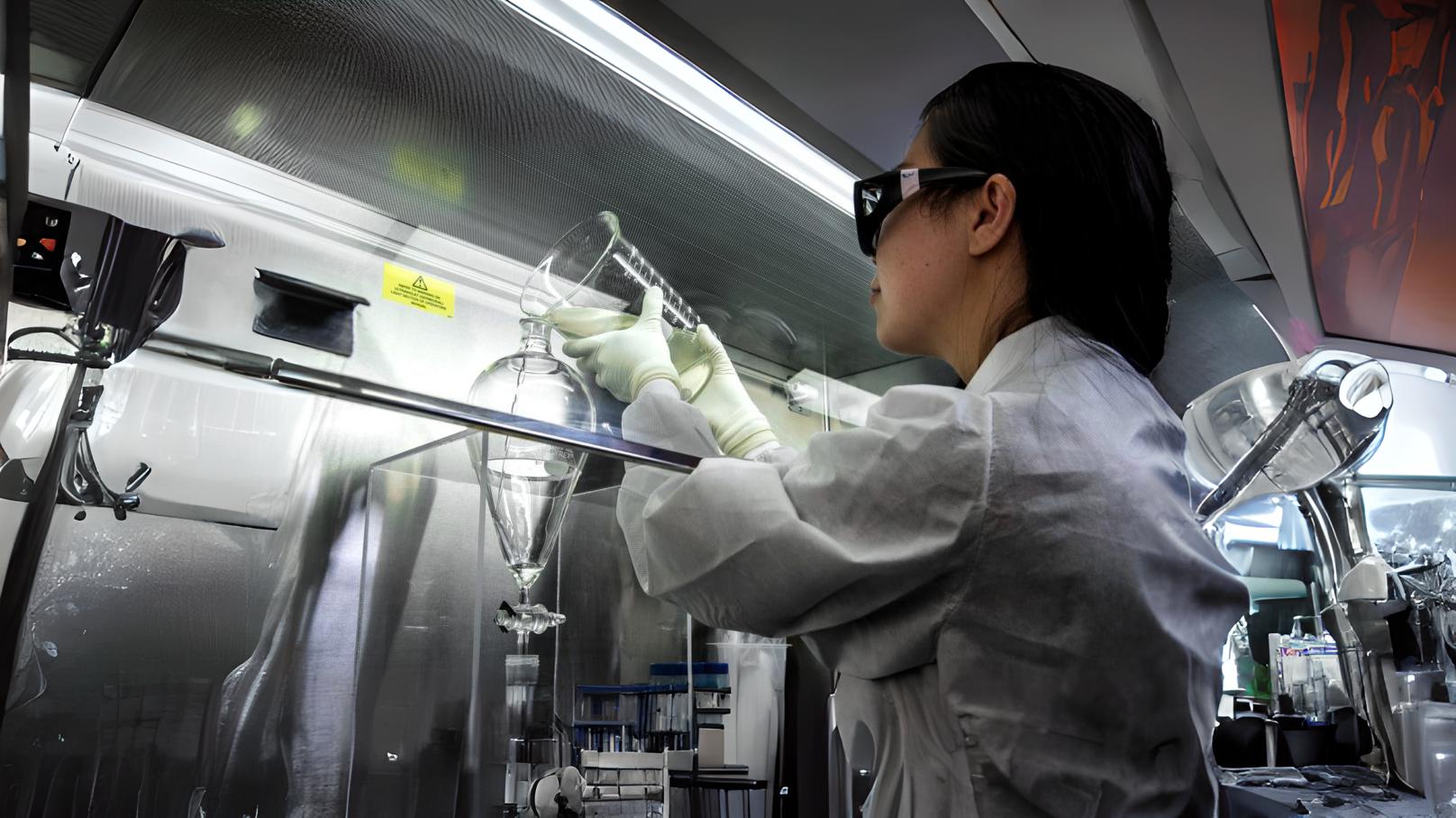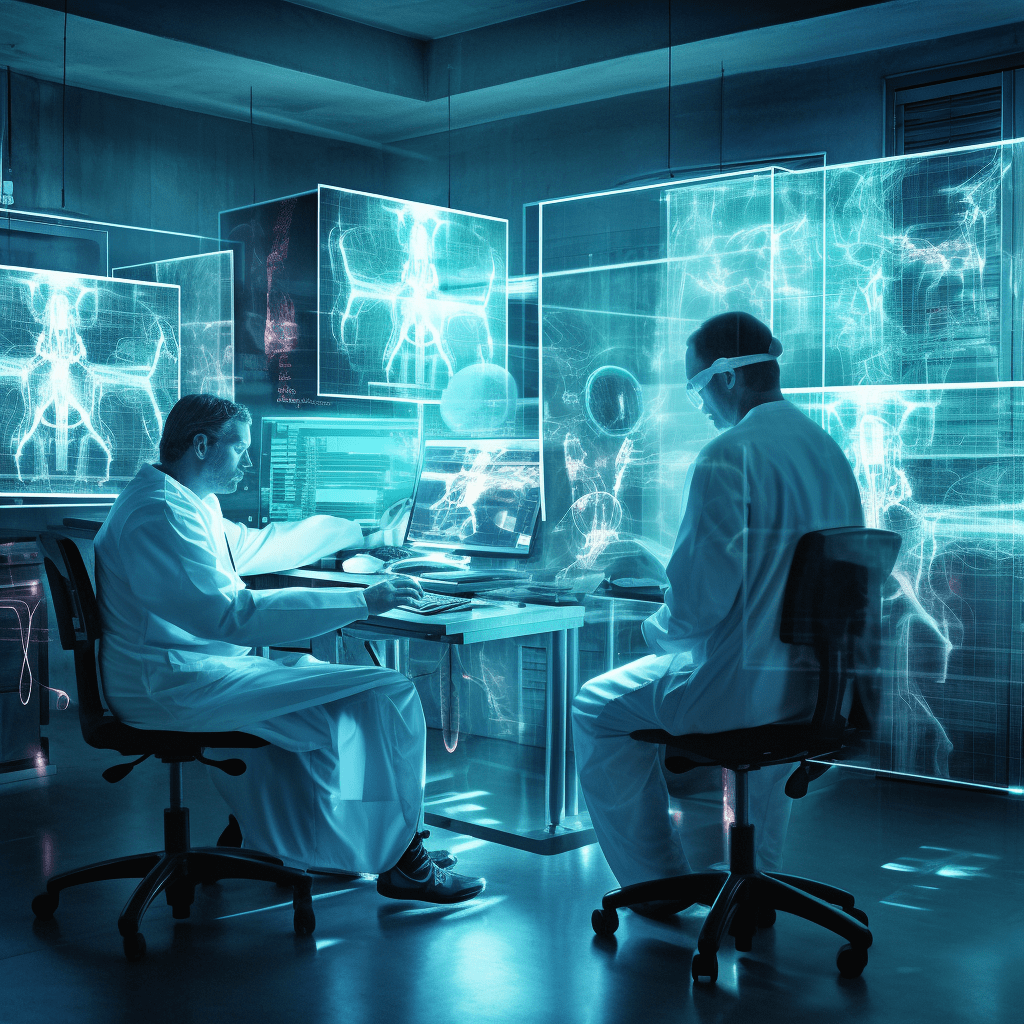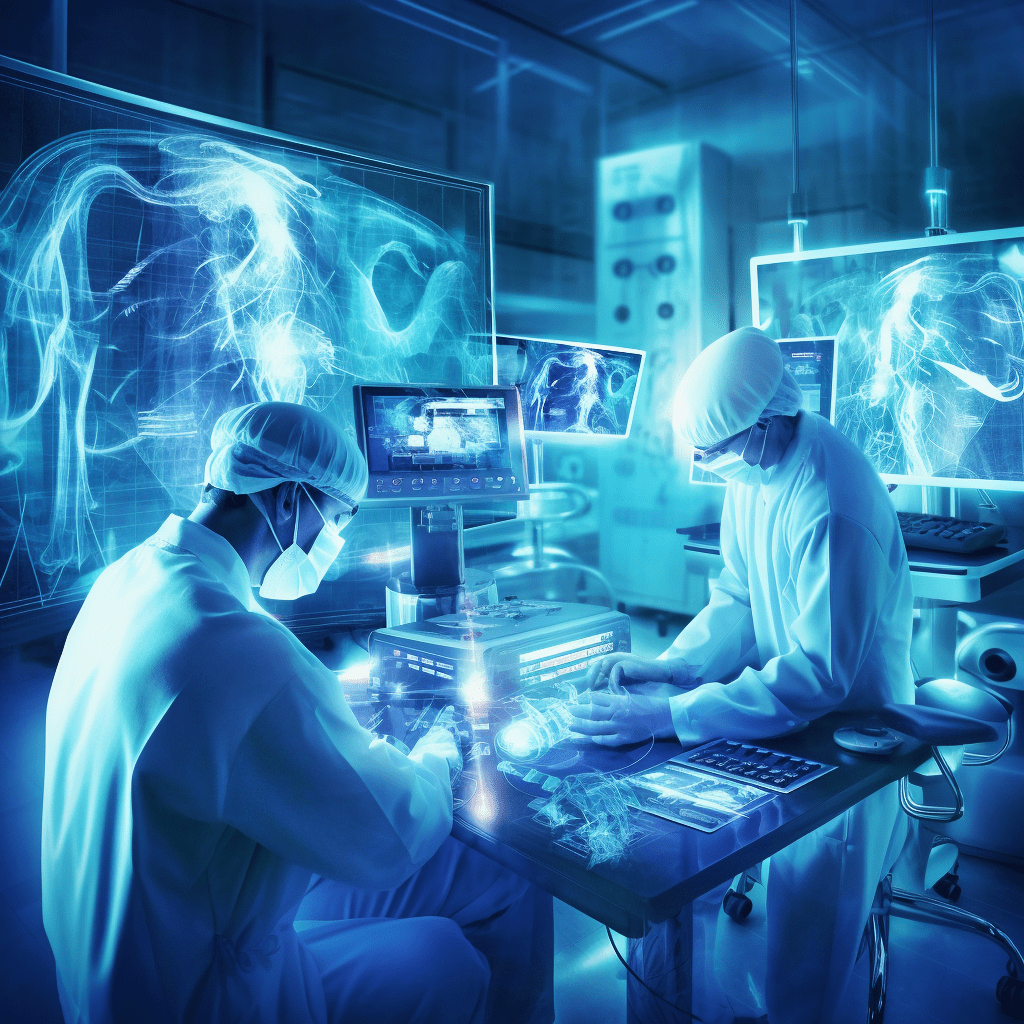The Medicinal Chemist Role in the World of AI
 6 years ago
By Josh Neil
6 years ago
By Josh Neil

Over the last few decades, the field of medicinal chemistry has been significantly changed by major innovations such as the internet and, more recently, automation. These changes have all driven the area towards quicker and more cost-effective medicinal chemistry, focused particularly on quality.
In recent years these changes have only increased in speed and impact: the rise of AI, machine learning and increased industry collaboration have meant that the roles of medicinal chemistry and those who practice it have been irrevocably changed. But how are these innovations affecting the industry? And will these incredible technological and process developments mean fundamental changes to the ways that medicinal chemists work, or even spell an end to their role entirely?
The Work of Medicinal Chemists
Generally, the medicinal chemist researches compounds to develop into successful drugs, tests new compound structure-activity relationships for efficacy and safety, and, in addition, creates new processes to better upscale drug production. The role of the medicinal chemist is subsequently highly varied, ranging from scaling up material for toxicity studies to identifying the quality of the lead molecule for a new target.
Due to the range of their tasks, chemists must have a wide skill-base including molecule creation, knowledge of chemical research methods, data analysis, mathematical modelling and potentially even some higher-level computational techniques.
Historically, the role involved a significant amount of animal testing in small project teams, and dealt largely with in vivo testing. This has changed in recent years, however, with the considerable innovations which have taken place across the sector.
A History of Change in the Sector
Innovations in medicinal chemistry are not new. An older field than many, it has seen vast shifts in paradigm over the last forty or fifty years, beginning with movements towards more complex drug design and compound development and transitioning more recently to digital innovations, such as the wealth of big data now pouring into the sector and the rise of AI and machine learning to match this.
One of the most major changes in the last few decades has been the increased use of combinatorial chemistry (a method of preparing thousands or millions of compounds in one process by preparing libraries of vast amounts of compounds and identifying useful components in them) and high-throughput screening (HTS) (using robotics, software, and sensitive detectors to quickly create millions of tests to identify active compounds, antibodies or genes that modulate a pathway). The invention of these two technologies has overloaded early pharma pipelines with hit compounds which may not necessarily move through to development.
With these hits, chemists must create lead compounds through hit-to-lead chemistry/biology and incorporate ‘drug-like’ properties before expensive late-stage preclinical development begins. That said, the introduction of these new processes has not changed how medicinal chemists train or work – they remain largely the role of specialists. That said, a general understanding of the principles at work stands medicinal chemists in good stead, now and in the future.
Another historic but still rapidly-growing area of medicinal chemistry involves structure-based drug design, a field that came to prominence during the 1980s. This method, which creates and optimises a chemical structure through a firm understanding of its 3D shape and interaction with a target, is used to better identify compounds for testing. It has provided hundreds of new targets for chemists.
Outsourcing and collaboration have also been a major factor over the last decade or so within medicinal chemistry, and continue to be a driving movement for innovation. Due to the increasing challenges of the process, collaboration is becoming increasingly useful to reduce difficulties and ensure companies remain on the forefront of industry innovation.
Such collaboration reduces risk where unmet needs are rare or particularly challenging, as in the case of Alzheimer’s. Here, medicinal chemists can provide expertise on how programmes should go ahead.
Modern Innovations
While medicinal chemistry has applied AI in basic forms since the 1960s, its increasing importance to compound design and analysis has led to a boom in pharma takeup of the technology. More than ever before, there is a vast wealth of biological, structural and chemical data in the field that humans are unable to analyse manually.
At present, this is what AI in the industry is most prominently used for – processing complex data and gaining insights from vast datasets and patterns. This can create confidence in decision-making and expose connections or viable targets that would remain unseen otherwise.
AI’s impact is already profound. According to experts, the considerable processing power and rapid analysis of AI can reduce the molecular design phase of a project from three weeks to three days; it can, in theory, reduce the drug discovery and refining process for a drug from three years to one.
Machine Learning
Machine learning is one of the greatest uses of AI algorithms in pharma today. Quantitative structure-activity relationship (QSAR) approaches, which can predict chemical structure properties, are prevalent, as are more unstructured forms of learning used to analyse molecular libraries and determine similar compounds.
A recent example of ML in action is the proposed ‘chemception’ approach pioneered by Pacific Northwest National Laboratory. The approach uses neural networks to learn from images of molecular structure and predict possible chemical properties, without the need for any further chemistry knowledge as input.
Machine learning currently allows chemists to score histological samples from in vivo studies or evaluate HTS phenotypic screen endpoints, speeding up analysis time and potentially increasing data quality. But even beyond this there are a range of potential future options which are only now beginning to be explored.
ML could soon build better QSAR models for physical properties, or CYP inhibition profile predictions. It could also be used to identify SAR trends, which aid selection of compounds to be synthesised. Where challenges occur, ML could analyse databases for solutions – an increasing possibility due not only to the ever-expanding base of data available to scientists, but also the increased ability of ML algorithms to ‘clean’ this data and structure previously unstructured sources and datasets.
Automation
Automation has been by far one of the most revolutionary innovations in medicinal chemistry. Combining automated methods of work with HTS, an innovation of the late 1980s, allows for the screening of thousands of compounds every day against pre-set targets to find hits.
Creating a drug design-make-test loop, combining predictive models with algorithmic molecule generation and search, can create a system which lists candidate solutions with optimal chemical structures for a defined profile. This automated multiparameter optimisation uses a database of building blocks from known chemistry and retaining their bonding patterns and frequency of occurrence.
Examples of automation in chemistry are already beginning to come in. US researchers created a ‘robo-chemist’ automated reactor which analysed experiment results and determined optimum catalytic reaction conditions in a single day. Processes such as column chromatography are now largely handled by automated machines, reducing costs and the need for manual input.
Where automation currently fails is in more complex tasks. Processes which require multiple steps that a human could perform easily – heating, filtering, and extracting materials – would be arduous for a machine. Additionally, most automated machines are still out of labs’ price ranges, or difficult to learn and operate.
It is believed that automation will become fully useful to the industry when a common synthesis can be found to make any molecule, as opposed to customised synthesis largely used today. In this case, automation would be made vastly simpler by standardisation, and uptake would skyrocket as a reaction to this.
Model Design
In terms of a much farther future, the rising costs of drug development and the high risk of late-stage failures could lead to a fundamental change of the pharmaceutical model. With the private sector unable to countenance expensive funding for increasingly risky enterprises, the public sector could come increasingly to the fore of drug development.
Here, Companies would outsource preclinical development and phase 1 trials as standard, choosing only promising candidates to take forward. One proposal has suggested the lifting of IP restrictions and publication of all preliminary data on prospective candidates. Validated compounds could then be chosen by industry, with negotiations taking place to bring the drug to market within the private sector.
Here, medicinal chemistry would play an increased role in research and design, though loss of IP rights has been seen as a criticism by some. Indeed, this model has already seen limited trial, particularly in the UK, where the Wellcome Trust created a seeding drug discovery award scheme for research projects.
This change would have significant changes to the role of the medicinal chemist. The foremost is the danger of them becoming compound ‘suppliers’ to pharma. To bypass this and create a more balanced role chemists will have to further understand new areas such as 3D structure of proteins, biochemical pharmacology and toxicity. Vitally, medicinal chemists must take a greater participation in the creation and development process.
How Are Medicinal Chemists Adapting?
The rapid expansion of AI and ML sound like an unprecedented change for molecular chemists: soon, AI will be integrated into every stage of the drug process, reducing cycle times vastly and generating high-quality, safe compounds through deep learning and analysis. With the processing power of AI soon making most design decisions faster and more accurately than a human could, coupled with automation’s ability to reduce the manpower needed even to run programs, concerns could be raised that the role itself will be considerably reduced.
This, at least for the foreseeable future, is untrue. Human experience will particularly be needed as the shift occurs and the industry changes. With AI’s analytical prowess, experts will be needed alongside to make creative decisions and have final say as issues arise.
The role of the medicinal chemist will certainly evolve: With AI and automation, the role of traditional tester and synthesis conductor will cease. But some tasks will remain difficult to automate, and here chemists will be needed to fulfil the same role they have done for generations.
Conclusion
The utility of the traditional medicinal chemist can best be summarised through an Insilico Medicine press release from a few years ago. The company had created an algorithm that could, to an extent, analyse the brain activity of medicinal chemists to determine how their brains differed from normal when analysing their response to molecules developed by AI. By using the supposedly inherent ability of experienced medicinal chemists to distinguish between good and bad molecules based on their structure or properties, the company hoped to distinguish what created an expert chemist from others and remove biases that could be found simply by asking them the same question.
Despite certain skepticism regarding the process, Insilico Medicine’s creation proves beyond anything else that the importance of the traditional medicinal chemist is not diminishing: that their inherent ability and expertise is still critically useful in the field today, and will only enhance the work of AI, not be replaced by it.
Joshua Neil, Editor
Proventa International
To ensure you remain up-to-date on the latest in clinical development, sign up for Proventa International’s online Biology and Medicinal Chemistry Strategy Meeting 2020.

Navigating the Complex World of Global Regulatory Affairs in Oncology
In today's fast-paced global pharmaceutical landscape, the regulatory affairs sector plays a pivotal role in ensuring the safety, efficacy, and market access of oncology drugs. As the demand for innovative cancer therapies continues to grow, understanding the intricacies of global...
2 years agoNavigating the Complex World of Global Regulatory Affairs in Oncology
In today's fast-paced global pharmaceutical landscape, the regulatory affairs sector plays a pivotal role in ensuring the safety, efficacy, and market access of oncology drugs. As the demand for innovative cancer therapies continues to grow, understanding the intricacies of global...
2 years ago
Overcoming the Hurdles: Navigating the Challenges in Oncology Clinical Trials
In the world of medical research, oncology clinical trials are at the forefront of innovation and discovery. These trials play a crucial role in advancing our understanding of cancer and developing more effective treatments. However, the path to successful oncology...
2 years agoOvercoming the Hurdles: Navigating the Challenges in Oncology Clinical Trials
In the world of medical research, oncology clinical trials are at the forefront of innovation and discovery. These trials play a crucial role in advancing our understanding of cancer and developing more effective treatments. However, the path to successful oncology...
2 years ago
Embracing a Patient-Centric Approach in Oncology Trials
In the realm of healthcare and medical research, the term "patient-centric" has gained significant traction in recent years. This shift in focus towards prioritizing patients' needs and preferences is not only transforming the healthcare industry but is also making waves...
2 years agoEmbracing a Patient-Centric Approach in Oncology Trials
In the realm of healthcare and medical research, the term "patient-centric" has gained significant traction in recent years. This shift in focus towards prioritizing patients' needs and preferences is not only transforming the healthcare industry but is also making waves...
2 years ago